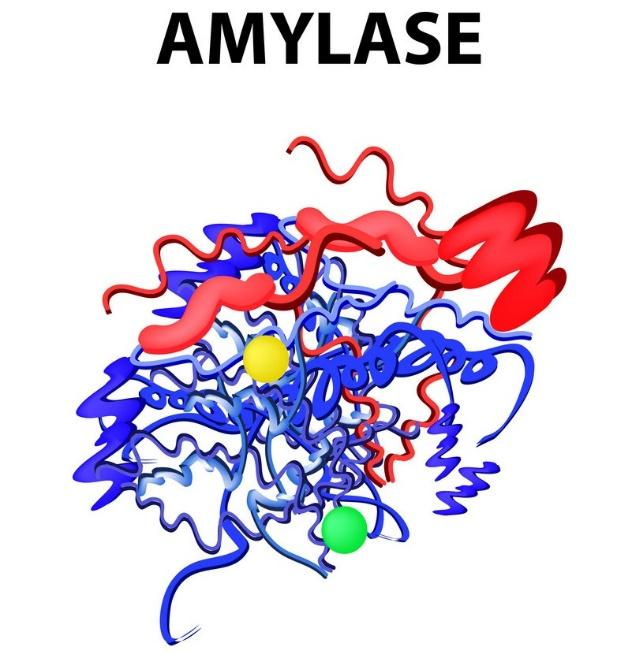
Salivary Amylase is Activated by which Ion?
Answer
491.1k+ views
Hint: As we know, enzymes are used for the enhancement of any reaction. Enzymes are proteinaceous structures which help in activating and producing desired results. One such enzyme is salivary amylase which helps in mastication of food and is present in saliva. Saliva contains salivary amylase which is present in inactivated form it helps in grinding the food to make it easier to gulp.
Complete answer:
As we knew that salivary amylase is an enzyme secretion produced inside the mouth. It is present in an abundant amount in saliva. Salivary amylase or ptyalin has one major role to keep bacteria in the mouth in control. They are being activated by chloride ions. Chloride ions are present in the enzymes and act as activators to activate the enzyme so that they can be put into action.
Food is being digested in the stomach but first food is engulfed by mouth in the cavity and as food is bigger in size, they need to be converted into smaller particles to engulf. Hence, saliva present in the mouth is used up for converting the bigger particles of food into smaller ones. And the process of converting particles for engulfing is called mastication.
The churning of food requires saliva as the mastication is done, food is being gulped down through the esophagus into the stomach. All enzymes are derived from proteins. Proteins are macromolecules which are building blocks of our body, along with other macromolecules such as- carbohydrates and fats.

Note:
As we discussed, salivary amylase is activated by ions namely- chloride ions and calcium ions. Chloride is anion and calcium is cation. Enzymes have a lock-key mechanism in which they directly attach to the substrate and get activated by factors and start the reaction at a faster rate. Every enzyme does not react with every substrate. They have specific substrates for specific enzymes.
Complete answer:
As we knew that salivary amylase is an enzyme secretion produced inside the mouth. It is present in an abundant amount in saliva. Salivary amylase or ptyalin has one major role to keep bacteria in the mouth in control. They are being activated by chloride ions. Chloride ions are present in the enzymes and act as activators to activate the enzyme so that they can be put into action.
Food is being digested in the stomach but first food is engulfed by mouth in the cavity and as food is bigger in size, they need to be converted into smaller particles to engulf. Hence, saliva present in the mouth is used up for converting the bigger particles of food into smaller ones. And the process of converting particles for engulfing is called mastication.
The churning of food requires saliva as the mastication is done, food is being gulped down through the esophagus into the stomach. All enzymes are derived from proteins. Proteins are macromolecules which are building blocks of our body, along with other macromolecules such as- carbohydrates and fats.

Note:
As we discussed, salivary amylase is activated by ions namely- chloride ions and calcium ions. Chloride is anion and calcium is cation. Enzymes have a lock-key mechanism in which they directly attach to the substrate and get activated by factors and start the reaction at a faster rate. Every enzyme does not react with every substrate. They have specific substrates for specific enzymes.
Recently Updated Pages
Master Class 11 Business Studies: Engaging Questions & Answers for Success

Master Class 11 English: Engaging Questions & Answers for Success

Master Class 11 Computer Science: Engaging Questions & Answers for Success

Master Class 11 Social Science: Engaging Questions & Answers for Success

Master Class 11 Maths: Engaging Questions & Answers for Success

Master Class 11 Biology: Engaging Questions & Answers for Success

Trending doubts
Differentiate between an exothermic and an endothermic class 11 chemistry CBSE

10 examples of friction in our daily life

One Metric ton is equal to kg A 10000 B 1000 C 100 class 11 physics CBSE

Difference Between Prokaryotic Cells and Eukaryotic Cells

State the laws of reflection of light

Explain zero factorial class 11 maths CBSE




